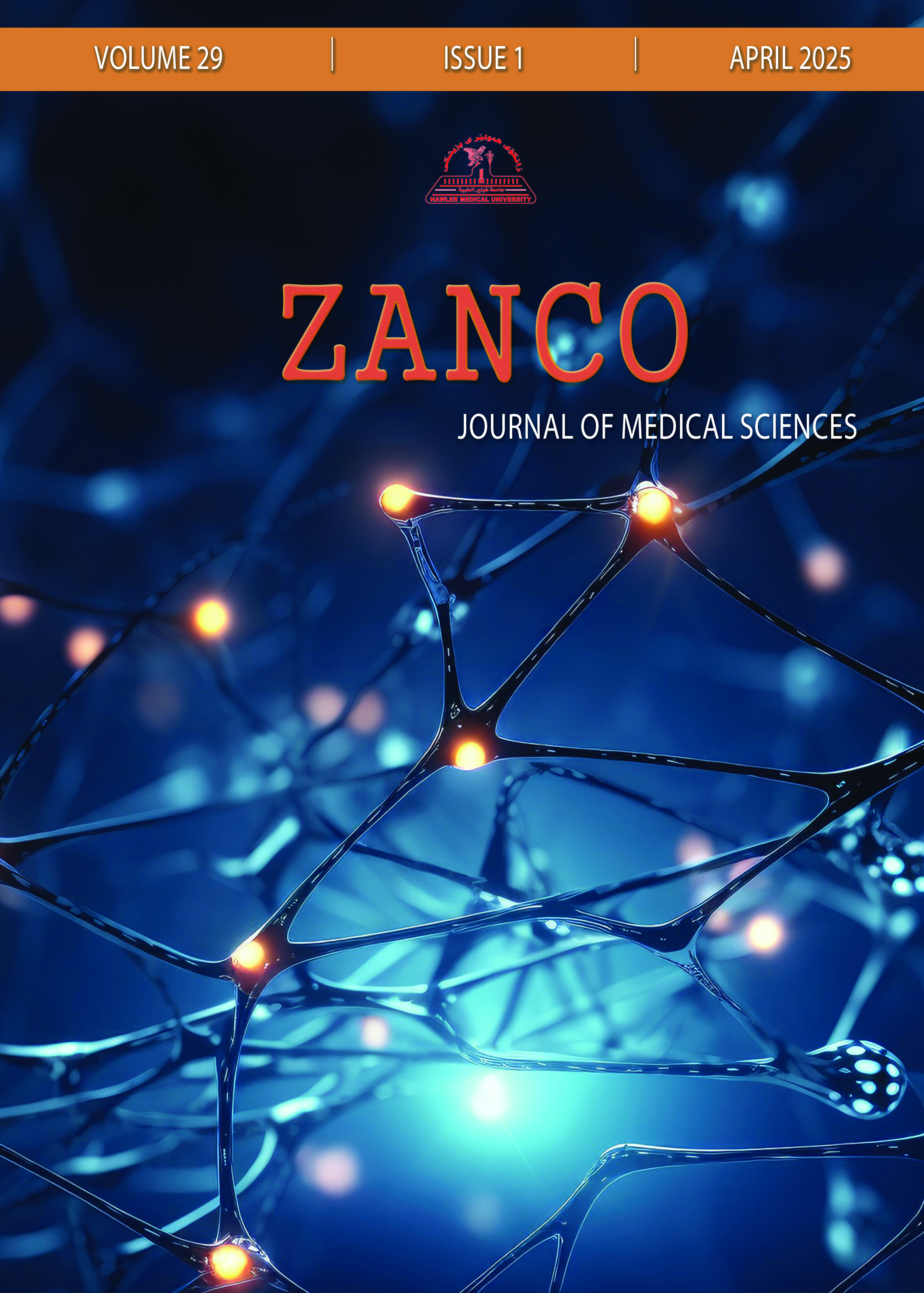Copyright (c) 2025 Abdlrahman Baiz Abdlrahman Miran (Author)

This work is licensed under a Creative Commons Attribution-NonCommercial-ShareAlike 4.0 International License.
- Articles
- Submited: November 16, 2022
-
Published: April 23, 2025
Abstract
Background and objective: The management of patients with head and neck defects from trauma and tumors (malignant and benign) is challenging, and the choice for reconstructive plan is most significant for better outcome regarding function (such as swallowing and speech), and aesthetic appearance. The anterolateral thigh free flap is one of the commonly used free flaps for reconstruction of complex wounds specially after oncosurgical resection. The objective of the study is to assess the versatility of anterolateral thigh free flap in reconstruction of complex wounds at head and neck.
Methods: Our retrospective study was carried out within five years from 2018 to 2022, in Erbil (the capital of Kurdistan Region, Iraq) at Maryamana and PAR private hospitals. We had ten patients with head and neck defects, and all the operations had been done under general anesthesia, five of them were myo-cutaneous and five were fascio-cutaneous flaps, they remained for about a week at the hospital for follow up and the antiplatelet (aspirin) with the anticoagulant (low molecular weight heparin) had been prescribed to all of them.
Results: Ten patients were included in the study, their mean age (SD) was 54.6 (21.1) years, the age range was 10-84 years, and 60% of them were males. The flap sites were the maxilla (40%), ear and temple (20%), in addition to the other sites. The commonest cause was maxillary cancer in 40% of the patients. All the flaps survived, and only one patient (10%) developed partial skin loss at the recipient site.
Conclusion: The anterolateral free flap has got many advantages and its viability and versatility is very high in management of complex wound defect in different sites of the body and to avoid risks it’s better to postpone thinning of the flap at the initial operation.
Metrics
References
- Harréus U. Surgical errors and risks–the head and neck cancer patient. GMS, Curr. top. otorhinolaryngol. - Head Neck Surg. 2013; 12. doi: 10.3205/cto000096
- Park CW, Miles BA. The expanding role of the anterolateral thigh free flap in head and neck reconstruction. Curr Opin Otolaryngol. Head Neck Surg. 2011; 19(4):263-8. doi: 10.1097/MOO.0b013e328347f845
- Gad SS, Ghareeb FM, Elsheikh YM, El-Nahas MA. Free anterolateral thigh flap in head and neck reconstruction. Menoufia Med J. 2015; 28(1):74. doi: 10.4103/1110-2098.155947
- Deptula P, Miller T, Cai L, Lee G. The Anterolateral Thigh Flap: Clinical Applications and Review of the Literature. Biomed J Sci Technol Res. 2018; 7. doi: 10.26717/BJSTR.2018.07.001473
- Alexander L, Fahrenkopf MP. Free Tissue Transfer Of The Lateral Thigh And Anterolateral Thigh. In Stat Pearls [Internet]. 2021. Stat Pearls Publishing. https://www.ncbi.nlm.nih.gov/books/NBK563253/
- Yang X, Yan H, Fan Y, Dong J, Cai Y, Li Z. Risk factors of free anterolateral thigh flap failure for reconstruction of lower-limb defects: a 10-year experience. Int J Clin Exp Med. 2018; 11(11):11028-37. https://e-century.us/files/ijcem/11/10/ijcem0069413.pdf
- Lee YC, Chen WC, Chou TM, Shieh SJ. Anatomical variability of the anterolateral thigh flap perforators: vascular anatomy and its clinical implications. Plast Reconst Surg. 2015; 135(4):1097-107. doi: 10.1097/PRS.0000000000001103
- Cigna E, Chen HC, Ozkan O, Sorvillo V, Maruccia M, Ribuffo D. The anteromedial thigh free flap anatomy: a clinical, anatomical, and cadaveric study. Plast Reconst Surg. 2014; 133(2):420-9. doi: 10.1097/01.prs.0000437258.85951.a1
- Lakhiani C, Lee MR, Saint-Cyr M. Vascular anatomy of the anterolateral thigh flap: a systematic review. Plast Reconst. Surg2012;130(6):1254-68. doi: 10.1097/PRS.0b013e31826d1662
- Askouni EP, Topping A, Ball S, Hettiaratchy S, Nanchahal J, Jain A. Outcomes of anterolateral thigh free flap thinning using liposuction following lower limb trauma. J Plast Reconstr Aesthet Surg. 2012; 65(4):474-81 doi: 10.1016/j.bjps.2011.11.007
- Soltanian H, Garcia RM, Hollenbeck ST. Current concepts in lower extremity reconstruction. Plast Reconst Surg. 2015; 136(6):815e-29. doi: 10.1097/PRS.0000000000001807
- Xiong L, Gazyakan E, Kremer T, Hernekamp FJ, Harhaus L, Saint‐Cyr M, Kneser U, Hirche C. Free flaps for reconstruction of soft tissue defects in lower extremity: A meta‐analysis on microsurgical outcome and safety. Microsurgery. 2016; 36(6):511-24. doi: 10.1002/micr.30020
- Spindler N, Al-Benna S, Ring A, Homann H, Steinsträsser L, Steinau HU, Langer S. Free anterolateral thigh flaps for upper extremity soft tissue reconstruction. GMS Interdiscip Plast Reconstr Surg DGPW. 2015; 4. doi: 10.3205/iprs000064
- Zhang Q, Qiao Q, Gould LJ, Myers WT, Phillips LG. Study of the neural and vascular anatomy of the anterolateral thigh flap. J Plast Reconstr Aesthet Surg. 2010; 63(2):365-71. doi: 0.1016/j.bjps.2008.09.028
- Liu L, Cao X, Zou L, Li Z, Cao X, Cai J. Extended anterolateral thigh flaps for reconstruction of extensive defects of the foot and ankle. PLoS One. 2013; 8(12):e83696. doi: 10.1371/journal.pone.0083696





